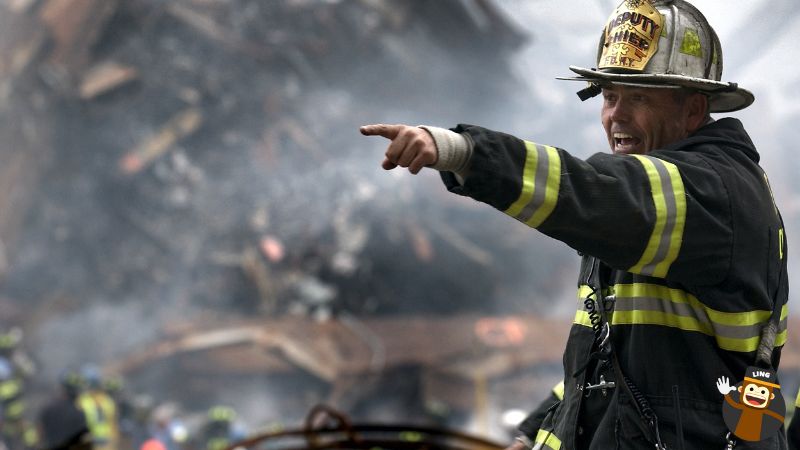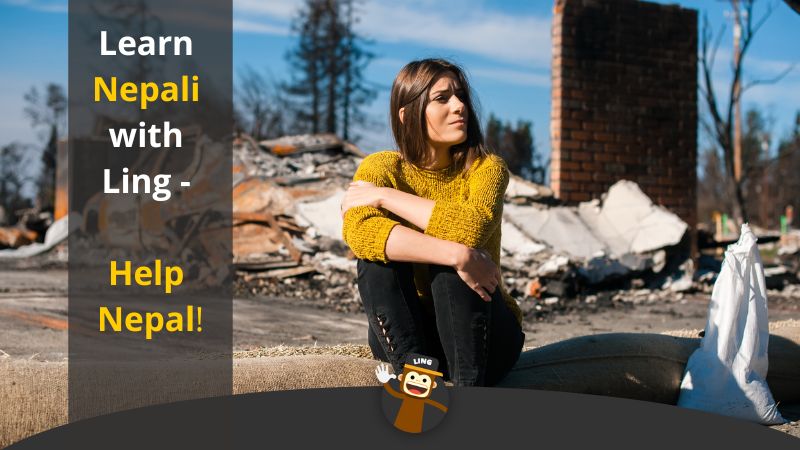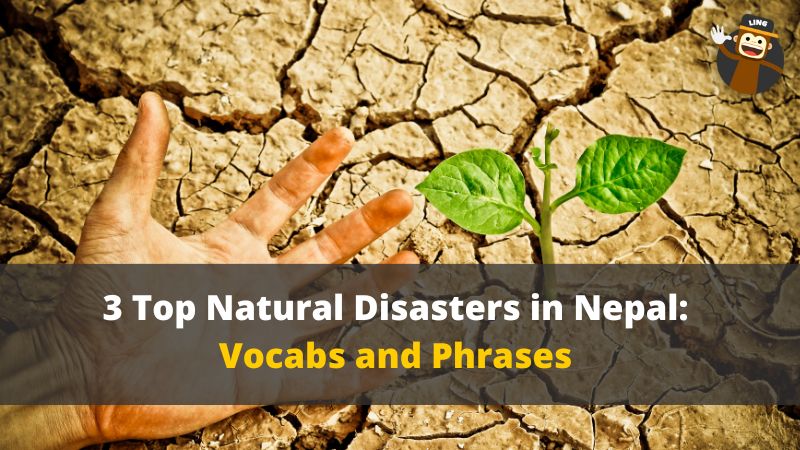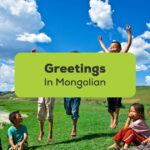Natural disasters in Nepal, how common are they? What can you learn to prepare for a trip to this beautiful country?
In the last 10-15 years, global environmental change has frequently been the talk of the town. It is undoubtedly the reason behind many natural hazards or disasters. Disasters can be divided into three types which are man-made, natural, and health disasters.
Many natural disasters resulted from climate change and have impacted and affected so many countries and humans of the world.
For a country such as Nepal, it’s essential to know about the natural disasters affecting the nearby areas and the country itself.
Understanding and learning Nepali vocabulary and phrases related to natural disasters in Nepal are crucial. This article will cover several of the must-know words related to just that and more!
Geography Of Nepal
Three countries surround Nepal which are India, China, and Bangladesh. Nepal has the highest altitude with Mount Everest and has less than 100m about sea level at Terai. Both these points are within 150km causing dynamic climate change in a small space. In the north of Nepal is the Himalayan region or mountain regions. In the middle are the hills known as the Mahabharat range or Churai hills. Finally, the Terai is down south.
Not only does Nepal have a unique biographical location, but it also has excellent bio-diversity. Kathmandu is the capital of Nepal and is well populated.
Unfortunately, Nepal loses about 300 people a year to natural disasters. It falls in the top 20 list of countries that are prone to hazards. Climate change could be the main reason for this. Though it poses a spectacular view and a great attraction to the tourists, the mountainous landscape is sadly why better transportation and safety development has been complex.
It also has low-lying plains that are vulnerable to flooding every year. To top it off, earthquakes leave the country shaken.
Biggest Natural Disaster In Nepal Till Date

For Nepal, regarding natural disasters, the question is usually “when,” not “if” it will occur. On that note, the biggest catastrophe that claimed several lives was the 7.8 magnitude quake which caused an avalanche on Mount Everest, causing 20 deaths.
The earthquake itself caused the death of almost 9,000 people, and it was stranded hundreds, and several were injured. Life has no stability, and resilience is difficult to imagine when your home is destroyed in minutes.
The most terrible earthquake, though, was in 1934. This hit Nepal and Bihar, India, and 19,000 people lost their lives. Usually, India, Tibet, and Bangladesh are affected by the earthquakes that take place in Nepal.
Natural Hazards – Vocabs And Phrases
Nepal’s three main natural hazards are floods, landslides, and earthquakes. Heavy rains and extreme climate conditions cause the landslides and flood disaster.
There is a major tectonic shifts in the Indo subcontinent under the Eurasian plate. This causes the earthquakes of varying magnitudes.
Below is a list of the most common natural disasters in Nepal with the pronunciation of the words and how it is written in Nepali script.
- Floods – Bāḍhī- बाढी
- Landslide – Pahirō – पहिरो
- Earthquake – Bhūkampa – भूकम्प
- Thunderstorm – Ām̐dhī – आँधी
- Flashflood of Glacier Lake – Glēśiyara tāla kō phlaiśa bāḍhī – ग्लेशियर ताल को फ्लैश बाढी
- Avalanche – Himapahirō – हिमपहिरो
- Fire – Āgō – आगो
- Drought – Khaḍērī – खडेरी
- Epidemic – Mahāmārī – महामारी
Must know phrases in Nepali in reference to disasters.
- I need help – Malā’ī sahayōga cāhiyō – मलाई सहयोग चाहियो
- Do not panic – Kr̥payā na’āttinuhōs – कृपया नआत्तिनुहोस्
- Where is the exit – Nikāsa kahām̐ cha – निकास कहाँ छ
- This way to the exit – Bāhira niskanē yō bāṭō – बाहिर निस्कने यो बाटो
- Danger – Khatarā – खतरा
- Be careful – Hōs gara – होस् गर
- Call an ambulance – Ēmbulēnsa kala garnuhōs – एम्बुलेन्स कल गर्नुहोस्
- We need a doctor – Hāmīlā’ī ḍākṭara cāhincha – हामीलाई डाक्टर चाहिन्छ
- This is an emergency – Yō āpātakālīna hō – यो आपातकालीन हो
- Evacuate now – Aba khālī garnuhōs – अब खाली गर्नुहोस्
If you would like to learn more words and phrases in Nepali to survive on your trip, visit this blog!

Efforts Being Made For Disaster Risk Reduction
Now, you must be wondering whether or not you should attempt to visit Nepal after all these Natural disasters updates. Fear not! Nepal is making a significant effort to mitigate disaster risks and increase its disaster response.
In recent years, the Nepalese government has derived a national-level action plan in case of a disaster in the following four ways.
- Preparedness: This includes mass education for the Nepalese people, even at community and rural levels. Policy planning is needed for poverty-stricken areas. Awareness and training for people help them to feel less vulnerable.
- Response: Community response during a disaster is crucial, and the government plays an extremely vital role in setting this standard. Evacuation, search and rescue teams, temporary settlements, sanitation, communication, and transportation are all crucial parts of a response to a disaster.
- Reconstruction and Rehabilitation: Basically, what is done after the damage and what can be done to avoid such damages in the future. For example, developing water resources in case of flash floods, having base camps, and so on.
- Mitigation: The role of non-government organizations can lead to the front during this time. They do risk assessments, and the government makes policies for Nepal.
Government Of Nepal
Despite the people’s vulnerability, Nepalis also have incredible adaptive capacity. Nepal is aware of its population, poor infrastructure, risks, and vulnerability. The government and many non-profit organizations are taking a holistic perspective on disaster prevention to reduce the vulnerability of lives.
Keeping disaster risk reduction at its highest priority, Nepal recognizes the challenges of increased population in urban areas, poor human development indicators, poor infrastructure and incorrect use of building codes along with the ongoing climate change.
Various stakeholders and humanitarian organizations have been devoted to providing relief and basic needs. But the rapid onset of hazards can be inevitable. Recent research informs that the frequency of natural disasters is said to increase further as the world continues to face climate change.
You Can Help
Stimulating public awareness is one of the key ways to help reduce the impact of natural disasters. You can play an essential role through education in the most vulnerable communities.
If you are planning on visiting the Kathmandu valley, Eastern Nepal, the mountains, or the Gorkha district, you are in a place where your words can save lives.
Here are some phrases that can stimulate awareness, thereby leading to disaster risk reduction suggested by the United Nations Development Program.
- Try to find higher ground – Ucca jamina khōjnē prayāsa garnuhōs – उच्च जमिन खोज्ने प्रयास गर्नुहोस्
- Be vigilant in case of landslides – Pahirōkō avasthāmā satarka rahanuhōs – पहिरोको अवस्थामा सतर्क रहनुहोस्
- Prepare for evacuation – Nikāsīkō lāgi tayārī garnuhōs – निकासीको लागि तयारी गर्नुहोस्
- Keep an emergency bag – Āpātakālīna jhōlā rākhnuhōs – आपातकालीन झोला राख्नुहोस्
- Don’t wait till it’s too late – Dhērai ḍhilō nabha’ēsam’ma pratīkṣā nagarnuhōs – धेरै ढिलो नभएसम्म प्रतीक्षा नगर्नुहोस्
Be Nepali with Ling
Because of the sheer diversity of Nepal, from jungle to icy mountain, tourism is welcomed for rafting, trekking, mountaineering, and many others. If you aren’t in for any of that, rent a plane to take you around the icy glades to behold the beauty of this glorious land.

For your trip, go prepared with your travel and language companion – Ling!
Ling is a gamified language learning app that provides you with free lessons to help sharpen your Nepali along your journey. Learning a language has never been simpler.
Try out Ling and learn Nepali online for free today. Download from App Store or Google Play.



































































